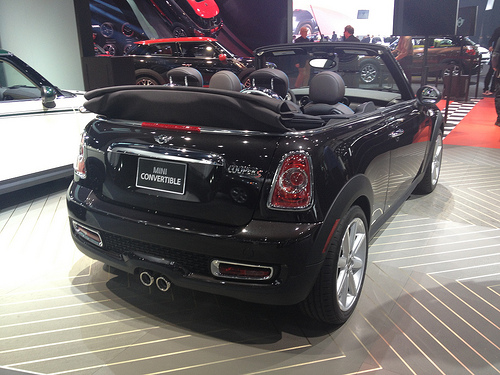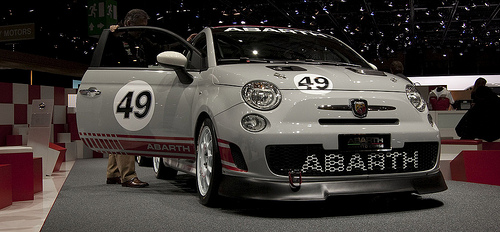Does parking make microcar ownership worthwhile?
Van, SUV and truck drivers may often fantasize over the parking options open to microcar drivers: it seems that tiny cars can park over, around, and in between all other vehicles on the road. Mini Coopers, Smart Cars, the KAIST Armadillo-T, and the Fiat 500 are all easily parkable, environmentally friendly vehicles. But even microcars have their own hurdles when it comes to parking in the world’s crowded cities. Read on to learn about new developments in parking the world’s most advanced microcars, including some which:
1. Fold right in half: The KAIST Armadillo-T foldable micro electric car saves on space in an innovative new way. “The small and light electric car completely folds in half when parking, making it a perfect fit for public or private transportation in an urban environment,” notes the company. The car pays homage to its namesake. “The research team imitated the animal’s distinctive protection characteristic of rolling up into a ball when facing with threat from predators. Just as armadillos hide themselves inside the shell, Armadillo-T tucks its rear body away.”
The car collapses from 110 inches to 65 inches long. A KAIST Armadill0-T weighs just 450 kg, and it takes up a third of the standard-sized parking space in Korea. Added bonus? A smartphone-remote control allows drivers to turn the car 360 degrees, for even more convenient parking in unusually sized parking spots.
2. Park themselves: The 2014 Mini Cooper hardtop, available in March 2014, measures slightly larger than previous models. But the new version offers an innovative automatic parking feature — the likes of which has been seen at work in larger cars, including Land Rovers and Jeeps. The car uses a sonar-based system that “automatically seek[s] parking spaces that the Cooper will fit into while the driver pilots the vehicle at speeds below 20 mph.” After the car finds an appropriately sized space, its driver is alerted to reverse and “modulate the brakes while the computer takes over the electronic power steering, guiding the vehicle into the space,” according to CNET.

Some new-model Mini Coopers like this one can actually park themselves. From Sarah Larson.
3. Save on traditional parking costs: Parking garages and car dealers alike are offering discounted parking for microcars. Take New York City, where the Fiat 500, which measures about 117 inches in length, 52 inches in width, and 52 in height, can be parked for a mere $99 monthly through a special deal on a lease at some garages. Icon Parking Systems, a parking garage company, offers half-price parking for Smart Cars in that city as well.
Parking on the street is easier too, as microcars can squeeze into spaces that are prohibitively small for SUVs or even mid-sized sedans. Designated parking space sizes vary by region. In Philadelphia, Pennsylvania, the minimum size is 8’6” x 18’0”, but if there are 25-plus spaces, some may be reduced to 8’0” x 18’0”. In Danbury, Connecticut, the parking space varies from 9′ in width to 18″0 in length for standard sized spaces, to 8′ in width to 15’0″ in length for compact sized spaces.

A much-coveted 2013 Fiat 500 Abarth. From David Villareal Fernandez.
Microcar drivers must still be wary of local parking laws, however. Small cars have been spotted in unusual spaces — such as wedged, perpendicular, between two traditionally parked cars. Not only are these configurations often illegal, but in doing so you risk major damage to your car’s lesser protected sides.
div class=”related-products”>
Like this topic? Check out our related products:
-
Compact Car Parking Signs
Category: Automotive, Resources
















